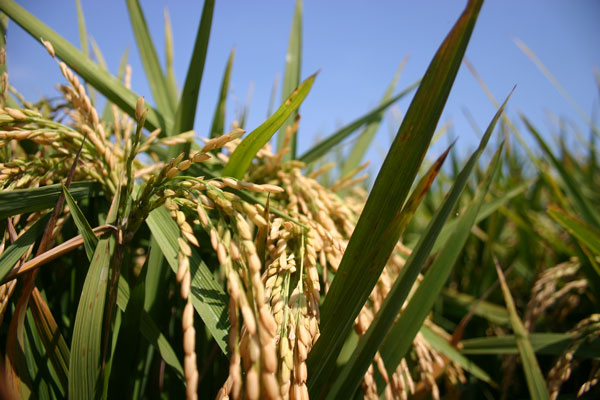
When the Texas Commission on Environmental Quality (TCEQ) caved into pressure brought about by Central Texas water users, state lawmakers and local government officials in communities including Austin and others around the Highland Lakes area, rice farmers and community leaders downstream in the Lower Colorado River Basin knew the deck was stacked against them.
In July, as expected, TCEQ ruled in favor of upholding an emergency order to withhold water releases from the Highland Lakes reservoirs that would have aided rice farmers and communities, although the current amount of water in lakes Travis and Buchanan at the time equaled a number above the 1.4 million acre feet of combined storage—the level considered adequate to release water downstream.
Lower basin water customers say it's just the latest chapter in an ongoing story of how washing cars, watering lawns and filling swimming pools in urban centers take precedence over agriculture and the environment.
For the latest on southwest agriculture, please check out Southwest Farm Press Daily and receive the latest news right to your inbox.
The plight of rice farmers and communities who rely on water in the Lower Basin has been escalating since the drought years of the new millennium. Multiple dry years prompted the Lower Colorado River Authority's (LCRA) Board of Directors to take an unprecedented initiative to curtail irrigation water from rice farmers beginning in 2011.
For four years running a water war has pitted farmers, rural community leaders and marine and wildlife ecologists against densely populated, better financed and more influential municipalities and recreational communities surrounding the Highland Lakes, one of the fastest growing regions in the state.
Farmers, ranchers and rural leaders, longtime stewards and champions of the lands of Texas, say they understand the need to conserve water during the ebb and flow periods of climate change—which can bring about flood, famine, and drought—all in a short period of time. And they bilaterally agree that curtailing river water from widespread use for agriculture was a required step to help meet the challenges of a long-running and severe drought. They also argue that responsibility and sacrifice required by emergency drought measures should be shared by all stakeholders.
With abundant rainfall this year and good rains last fall, the issue of irrigation water from the Colorado River for Texas' largest rice growing region may not be as critical as it was for the previous three years. But rice producers in Colorado, Wharton and Matagorda Counties, an area that produces the bulk of Texas' rice crop, point out that deep cuts in rice production in recent years resulted from LCRA's recommendation to curtail use of Colorado River water for irrigating their fields.
Biggest user
The argument that Austin residents are not willing to do enough while farmers do without water got some unexpected support this month in the form of a new NASA study concerning lawns and the amount of water and fertilizers used each year to sustain all that urban greenery.
According to the new study, American lawns are now the largest single crop grown in the United States. Lawns amount to about 63,000 square miles, about the same amount of land found within the entire State of Florida.
The study focused on American lawns and their impact on the environment and water resources. It notes that maintaining a well-manicured lawn uses as much as 900 liters of water per person per day. Multiply that times the number of manicured lawns in your average size city, and the number becomes substantial, even alarming.
The really bad news is that the study indicates the trend for more lawns and more water to sustain them isn't going away anytime soon, in spite of the recent deadly drought in Texas and the current severe drought conditions in California.
“Because of demographic growth and because more and more people are moving towards the warmer regions of the country the potential exists for water use for turf grasses to increase,” the study notes.
While the study was not about the growth of lawns alone but also about the use of nitrogen on lawns and how lawns can serve as a counter sink to help mitigate climate change, it should serve to open a few eyes about the vast amounts of water used to support lawns in an urban environment. When coupled with other water uses common to hubs of dense population, like washing cars and floating recreational boats, there's little question that water conservation should be the responsibility of every stakeholder— regardless the geography involved or nature of its use.
About the Author(s)
You May Also Like




